An innovative project studies urban insect biodiversity
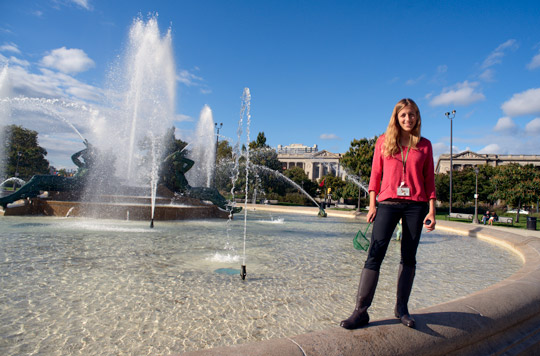 Isabelle Betancourt fished bugs out of Swann Fountain three times a week. | Photos by Jen Britton
Isabelle Betancourt fished bugs out of Swann Fountain three times a week. | Photos by Jen Britton
“Most of the things I catch are drowning or dead,” says Isabelle Betancourt, curatorial assistant of Entomology at the Academy of Natural Sciences of Drexel University, as we stood next to Swann Fountain in Logan Circle, surrounded by some of Center City’s great landmarks: the Academy itself, the Franklin Institute, the Free Library and the Cathedral Basilica of Saints Peter and Paul.
Some may picture entomologists dressed like 19th century explorers, decked out in khaki with pith helmets and butterfly nets. Betancourt was dressed like a casual office worker—sweater and jeans—the day in early October that I accompanied her. As for her sampling equipment, Betancourt carried two collecting vials and “a fishnet that I borrowed from my fish at home.”
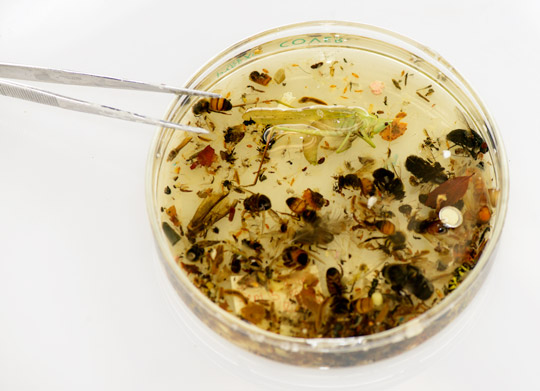
I pulled off my shoes and socks, rolled up my pants, and followed Betancourt into the Swann Fountain. She stalked through the water, dipping the net to pick up any bugs she found. I managed to strain a few bumblebees out of the water with my fingers and add them to the day’s haul.
An urban fountain isn’t a typical field site, but it made perfect sense for a frustrated entomologist stuck working indoors. “This was just an idea I came up with when I was having lunch out in Logan Square … I was going outside and thinking what kind of insect project could I do,” Betancourt says. “I missed doing field work, working here at the Academy with the collections, and so one day I was walking by the fountain, and I saw an insect float by, and that gave me the idea.”
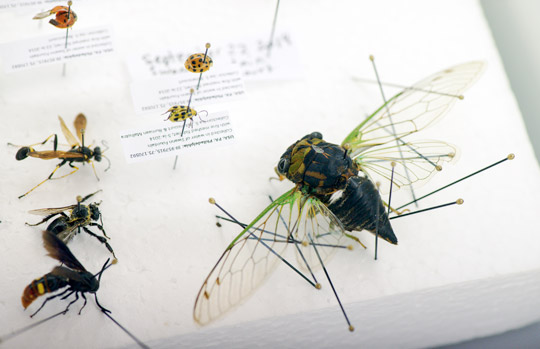
Betancourt sampled the fountain three times a week from May to November of 2013, and again this year starting in April. By October, she had found up to 300 species of insects.
Back in her office, Betancourt showed me more vials of insects, in addition to glass-topped drawers of mounted specimens—rows of nondescript flies and beetles, as well as more impressive critters like cicada killer wasps and green conehead katydids—all of which met their fate in the waters of Swann Fountain.
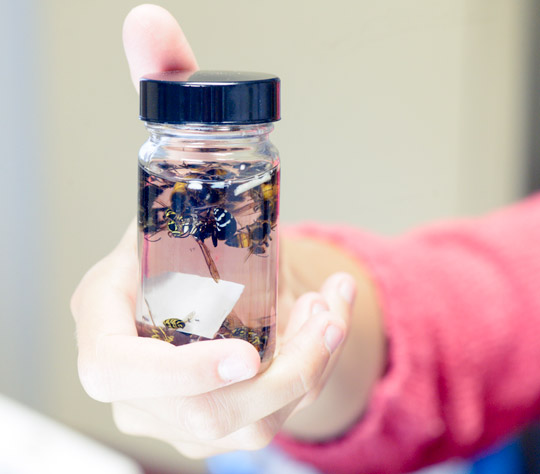
Betancourt was particularly proud of a tiny, brilliantly blue-green insect, a species of cuckoo wasp. Cuckoo wasps are kleptoparasites that, like their namesake birds, lay their eggs in the nests of other species. The cuckoo bird’s nestlings muscle the host species’ babies out of the way to be raised by their unwittingly adoptive parents. The cuckoo wasp’s larvae eats the paralyzed insects left by the host wasp for its own offspring. This particular species was new to the Academy’s collection, an impressive feat given that the Academy has over 107,000 species of insects.
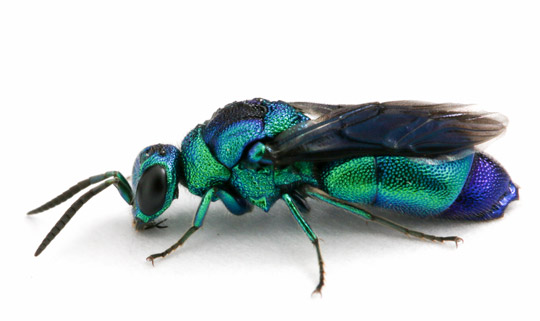 The tiny, brilliantly blue-green cuckoo wasp was new to the Academy’s collection. | Photo courtesy Isabelle Betancourt
The tiny, brilliantly blue-green cuckoo wasp was new to the Academy’s collection. | Photo courtesy Isabelle Betancourt
In mid-October, Betancourt left her position to take a job in Borneo studying orangutans. The Academy has no immediate plans to continue the sampling project, but Swann Fountain isn’t going anywhere, and the collection of insects Betancourt found in Center City can serve as a reference point for future research. “That’s very important,” she says. “The ability to replicate it, to compare over time, so 10 years from now someone can collect again and see how things have changed.”
Other urban entomology research continues at the Academy. An Academy sampling project at Eastern State Penitentiary has been running since 2011, and, according to Entomology Curatorial Assistant Greg Cowper, the Penitentiary has invited the Academy back for 2015.
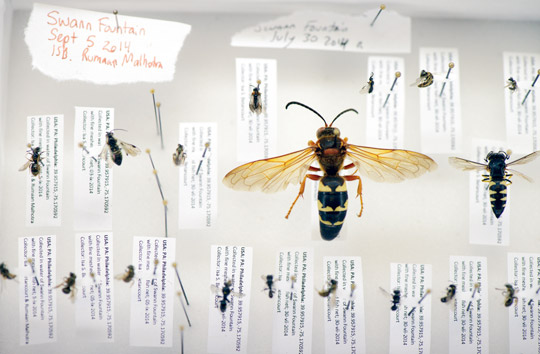





These pics are amazing, nature is stunning, indeed!
These bugs are really incredible, just look at their colors!